Back to Basics? Predictions for K-12 Education and School Design in 2017
Crystal balls are notoriously cloudy but certain trends in education seem to be gaining traction and will have an effect on the schools we build. While the election has created uncertainty about future directions for Federal policy, Common Core standards and how vouchers might affect the Public School system, students’ educational needs will continue to be the underlying driver for decision-making. Funding and policy will of course be affected by the political decisions that are made, but data and experience will continue to inform the direction of the education sector as it continues to evolve. In 2017 we expect to see a variety of forces influencing the educational facilities we design and build. NAC educational thought leader, Greg Stack, shares his predictions for the direction K-12 education is headed in 2017:
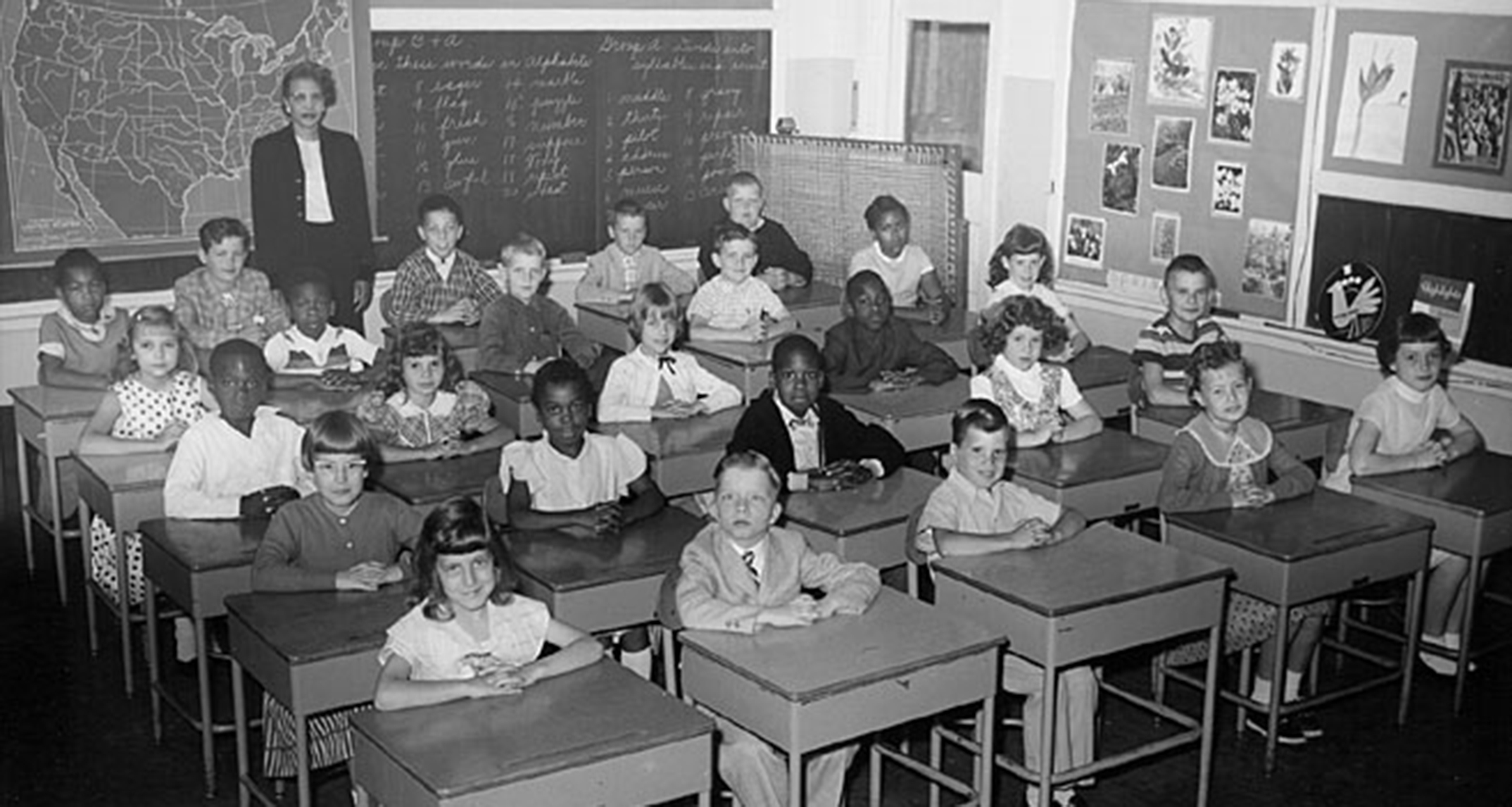
Back to Basics Classroom
A Back to Basics Movement
The conservative shift signaled by the election is likely to raise calls for a “Back to Basics” movement in education. Calls to depart from the Common Core for a curriculum that emphasizes: Reading, wRiting and aRithmetic with an emphasis on memorizing and regurgitating facts will become a frequent refrain.
Countering this trend, a greater autonomy for states in administering public education and free market approaches such as vouchers will provide the opportunity for more progressive pedagogy to be explored. Results will be very uneven across the country with progress toward educating all students with core competencies taking a back seat to respecting local opinions and preferences.
From a facilities standpoint it is likely that a greater number of traditional “cells and bells” schools will be demanded in some regions of the country, while other areas will continue to explore creating spaces that support more progressive learning models.
Safety and Security
The recurring tragedies in our nation’s schools will continue to keep a focus on safeguarding our children. Some will approach this with a fortress mentality with schools designed to withstand assault, but a better approach is one that allows increased observation while controlling access to the school. The new design for Sandy Hook Elementary is very open in order to be secure and is a result of the Newtown community’s response to that tragedy. Community outreach and discussion of the issues and approaches is paramount in developing safe and secure school designs.
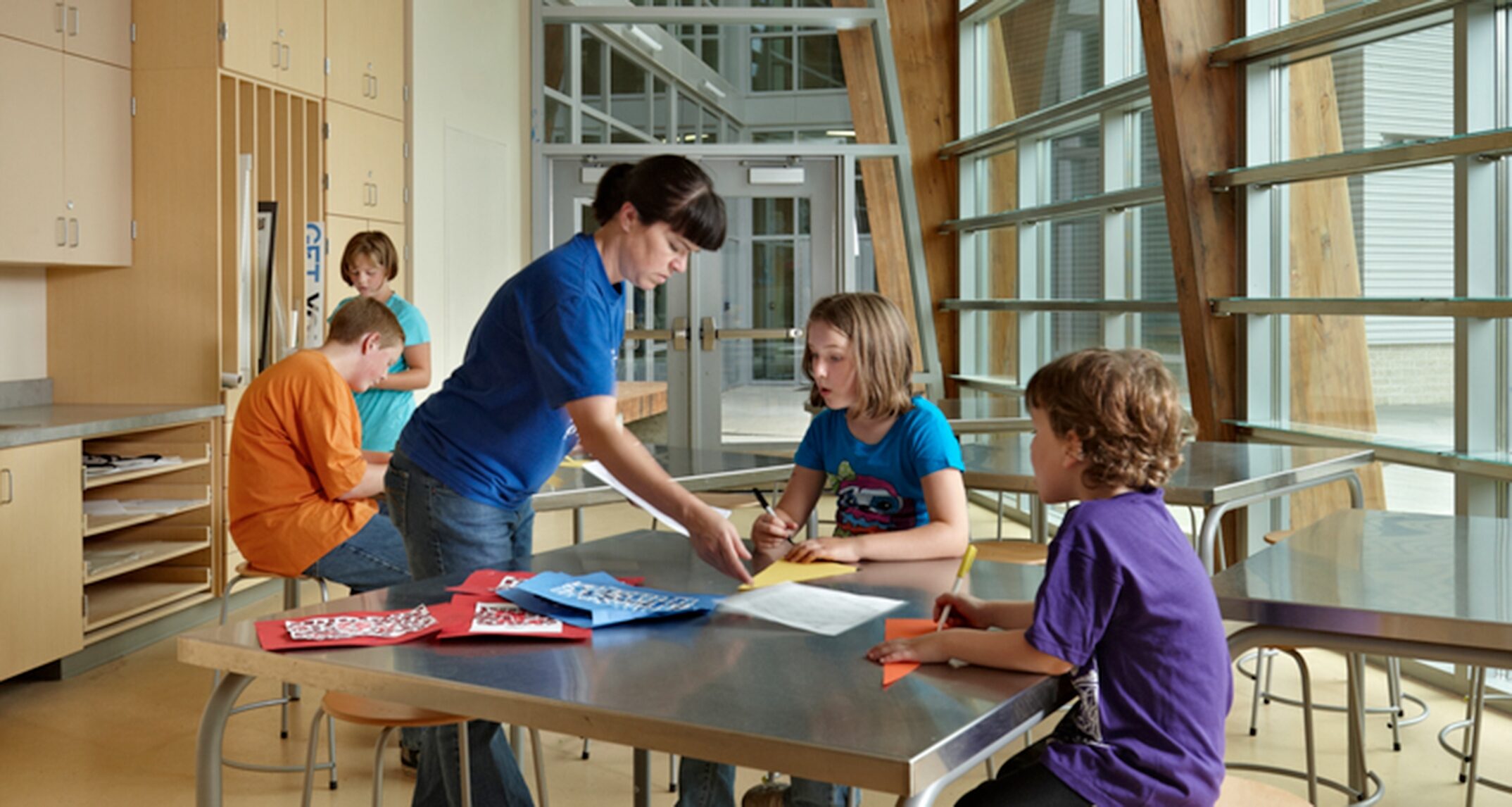
IDEA Lab at Machias Elementary School, Snohomish, WA - NAC Architecture
Flexible and Adaptable vs. Fixed and Purpose Built
There will continue to be a trend to creating educational spaces that are flexible and adaptable to accommodate multiple learning and teaching modes. Alternatively even the most flexible schools will have purpose built spaces with fixed elements such as plumbing, electronic infrastructure and exhaust systems to accommodate an increasing emphasis on technical education such as STEM. While STEM spaces certainly require flexibility, they also need robust infrastructure for activities as varied as culturing bacteria and welding. Maker Spaces also require specialized spaces in addition to flexible areas that are readily reconfigurable. The “cells and bells” approach is not ideally suited for supporting these sorts of technical education pedagogies. Double loaded corridor classroom designs are neither flexible nor adaptable, but will likely continue to be the predominant school building configuration model in 2017.
Cross-Curricular Classrooms
Even in a classroom-centered school there will be a trend to make those classrooms “cross-curricular” to allow students to explore multiple subjects in each setting. The Virginia Department of Education has produced a guide to cross-curricular instruction and many states are realizing the value of allowing students to connect what they are learning with what they know about other subjects. This makes learning more relevant and engaging. Spaces for cross-curricular learning need to allow for student exploration using a variety of techniques. Writing while learning science, making things while engaged in music, cooking while learning world languages are a few examples.
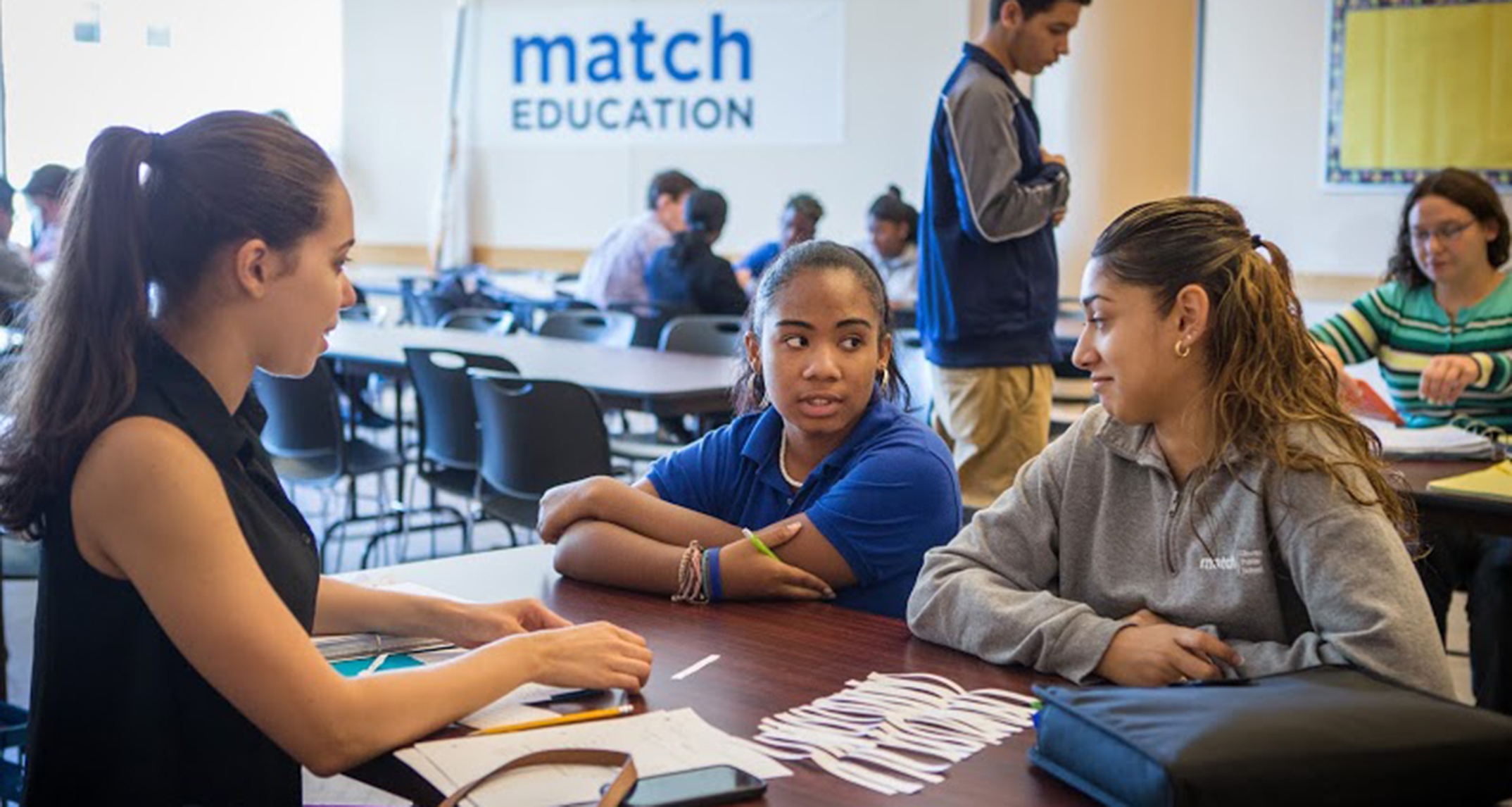
Match Public Charter High School, Boston, MA - HMFH Architects
High Expectations, High Support
The success of Boston’s Match Charter Schools and similar efforts around the country may lead other educators to try the Match Schools' "high expectations, high support model." This model devotes most resources to classroom teaching keeping students in class for long hours and setting high standards for student performance. Students are supported in the Match system but so are teachers who receive weekly feedback on their teaching.
While Match Schools operates in a variety of spaces the model could benefit from purpose built schools that support the characteristics of this approach. Providing break areas for students and teachers, and conference areas for evaluations and presentations are just a couple of supportive measures that could help the Match model through design.
Combining Schools with Other Community Services
There will be an increasing trend to combine schools with other community services both for the benefit of education and to economically use tax dollars. The E3 Civic Charter High School inside the San Diego Public Library is an example of this trend.
The school gives students access to the 1.2 million-volume library and changes the learning environment just by its location. Clinics, police stations, performing arts centers and museums are all community service facilities that will be combined with schools. Each of these combinations will require careful consideration of the degree to which facilities can be shared and also how to artfully separate functions while integrating them.
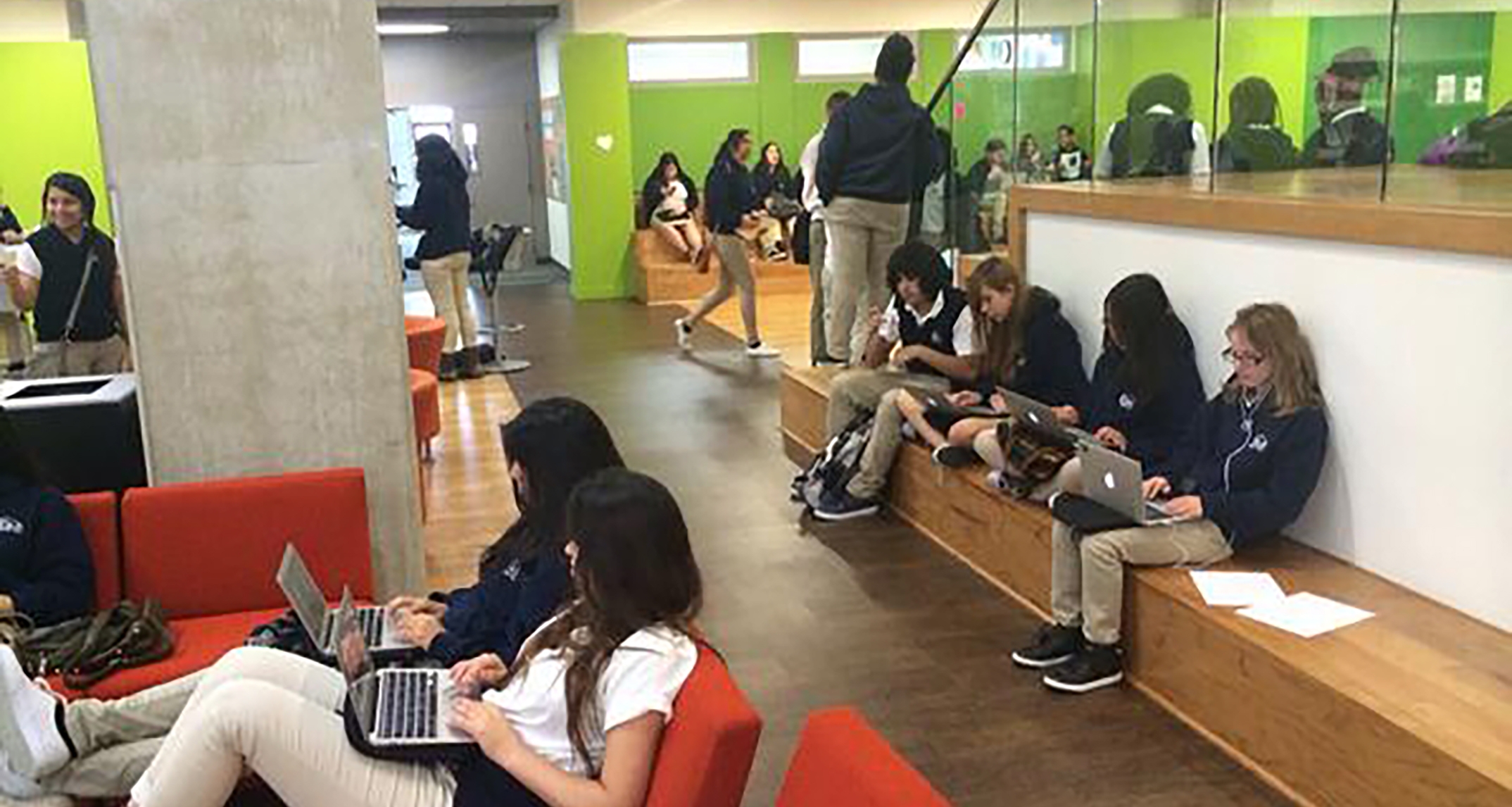
E3 Civic Charter High School inside San Diego Public Library - LPA Architects
Schools in the Work Place
We are also likely to see an increasing trend of schools in the workplace. There are several reasons for this. There is a synergy that results from the co-location of a school with business and other functions. An example of this is the Henry Ford Academy School of Creative Studies in Detroit.
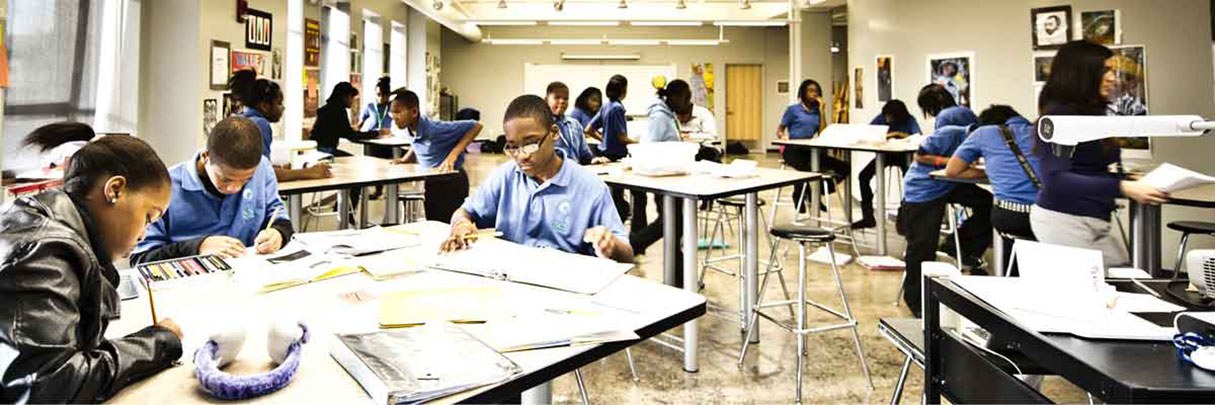
Henry Ford Academy of Creative Studies, Detroit, MI - Concordia Planning + Design
Co-located with businesses and a design college, middle and high school students are able to witness their own career potential.
A second reason behind this trend is that schools in the workplace can be an amenity for employees. Committed technical workers who put in very long hours struggle with work/life balance. Having their children close by and available to them allows for more family connection while still allowing them to work the hours their industries demand. Work/life balance becomes a key recruiting and retention tool in a very competitive talent marketplace.
Finally, employers who are unable to find qualified graduates for technical fields are beginning to take steps to solve this problem directly by supporting and even opening schools. Design Tech High School, a public school now being built on Oracle’s campus in Redwood City, California, is one such example.
Already in operation in temporary facilities the school uses design thinking and real-world problem solving to engage students in creating their own projects and exploring at their own pace. The design and planning opportunities this approach provides are an exciting trend for the future!
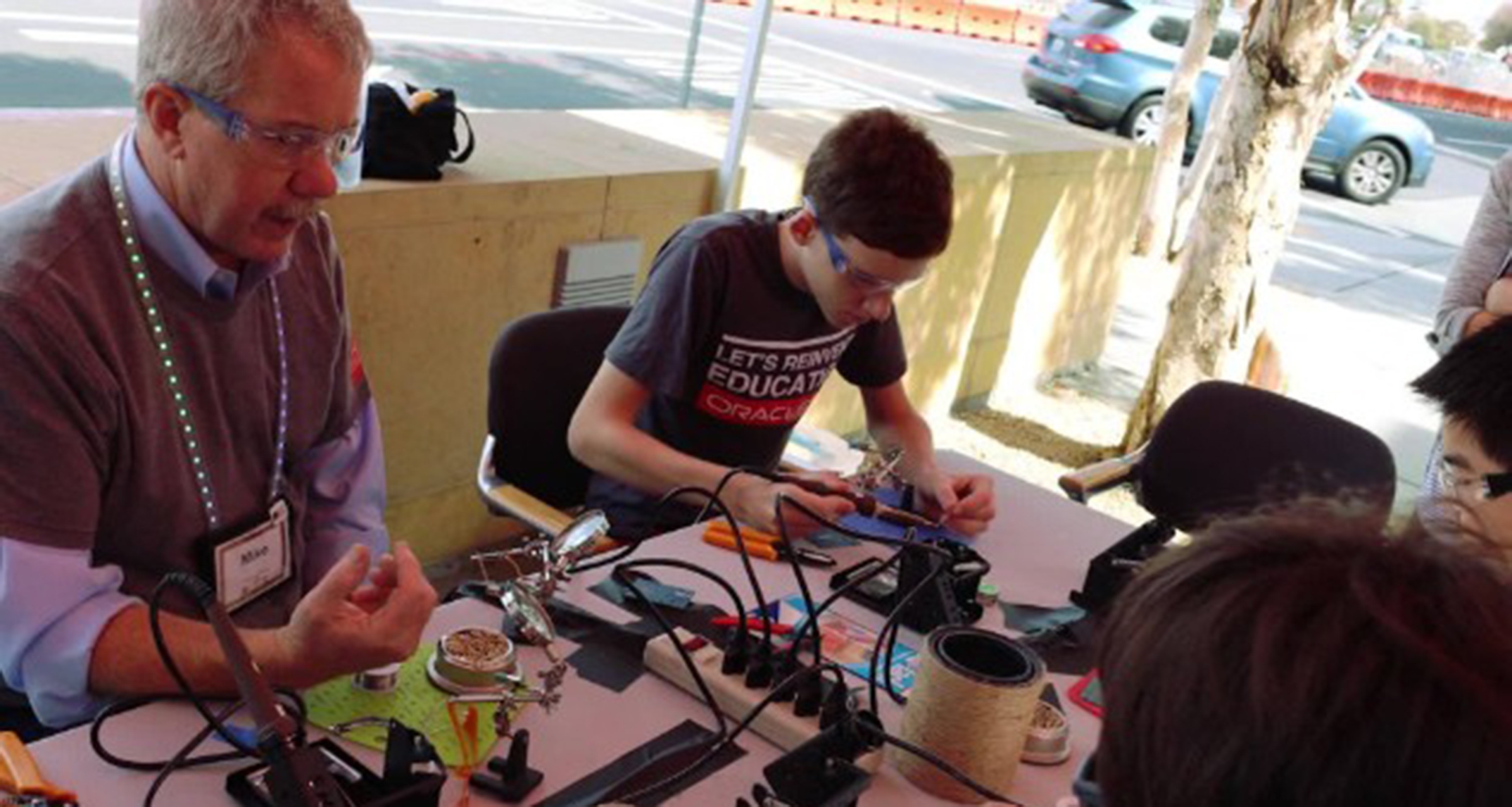
Design Tech High School on Oracle’s Campus, Redwood City, CA - DES Architects
A Growth Mindset and Personalized Learning
Combating the back to basics movement will be a continued emphasis on personalized learning and fostering a growth mindset in students. Enabling students to learn at their own pace and study subjects that they find compelling (Personalized Learning) goes hand and hand with convincing students that their potential is not limited and they can grow intellectually (Growth Mindset).
By learning at a pace that allows subject mastery, students realize they can improve and they are not “stuck” at one intellectual level. Creating the opportunity for personalized learning requires the integration of technology and that a variety of learning situations be available to students so they can individualize what they learn. Smaller spaces, collaboration spaces, presentation spaces and spaces to build and tinker with objects and ideas are some of the design responses we will introduce in response to this trend.
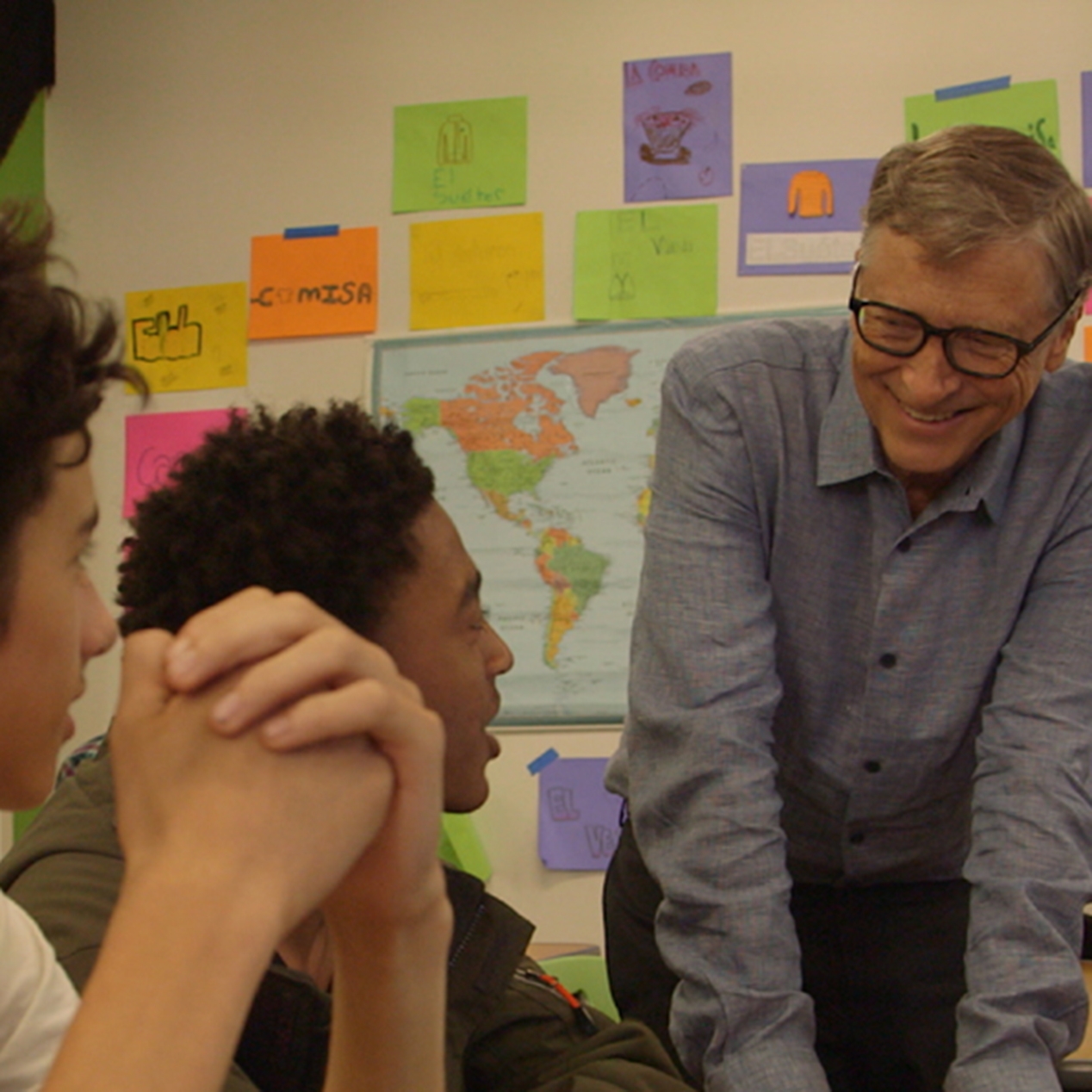
From Gates Notes: "I Love this Cutting Edge School"
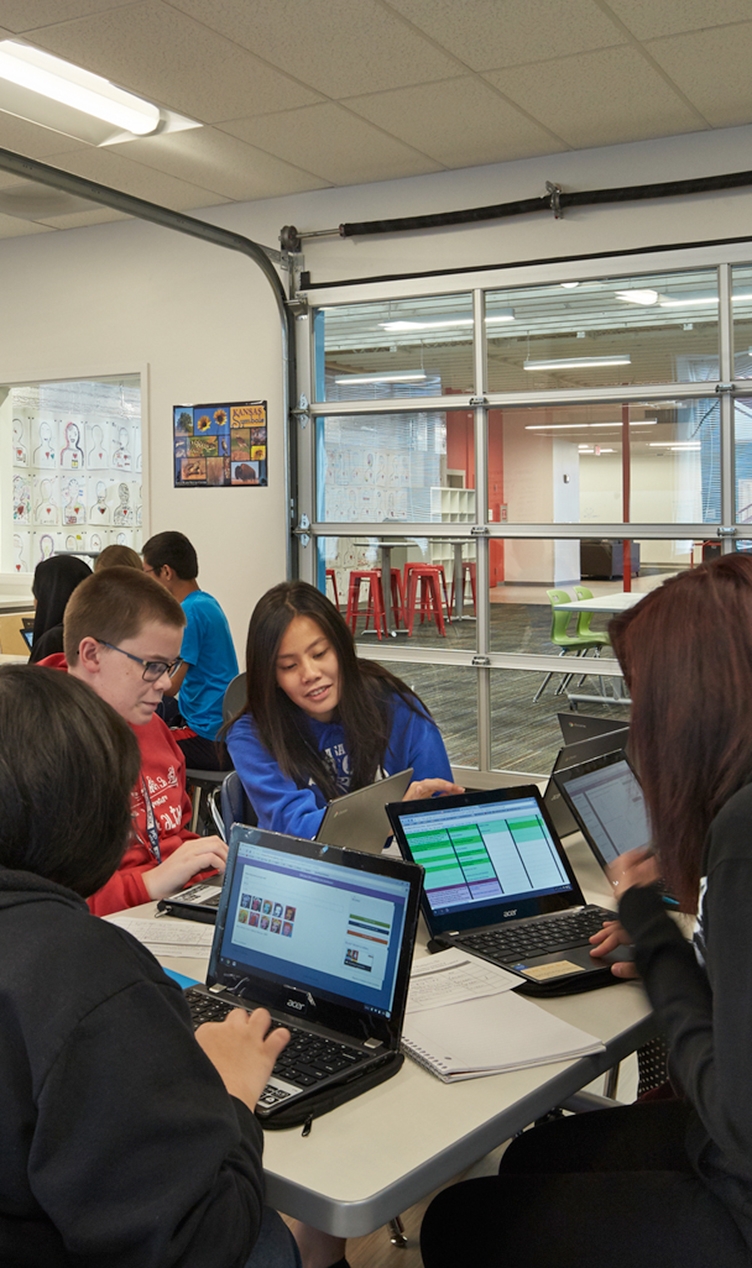
Summit Sierra Charter Public High School, Seattle, WA - NAC Architecture
After visiting Summit Sierra in Seattle’s International District, Bill Gates said, "At its best, personalized learning doesn’t just let students work at their own pace. It puts them in charge of their own academic growth." He left feeling even more hopeful about what personalized learning might do for students and teachers.
Read his findings
Watch his interview
Artificial Intelligence
As artificial intelligence continues to evolve and improve educators will increasingly turn to “smart” machines to help them personalize lesson plans to specific students. Although it seems counterintuitive to say that technology will allow more personalization, the facts are teachers will be better equipped to analyze and respond to student needs in a more individual and personal way, because the artificial intelligence will take over the analytics and drudgery of determining what those needs really are. Thus, technology will ultimately provide more connection between students and teachers. This trend has the potential to radically change the physical educational environment with group lessons for the sake of economy being less necessary. So instead of classrooms, schools with a variety of smaller spaces, both flexible and purpose built, will begin to appear. At the same time the need to build community among groups of students and teachers will require that spaces for assembly, group work, presentation and exploration will be valuable components of future schools.
Many Educators Trying Many Things
In summary, we expect to continue to see educators and institutions trying many approaches to improve educational outcomes. While some will go back to basics, many others will continue to test alternative pedagogies enabled by technology and the demands of communities and employers.
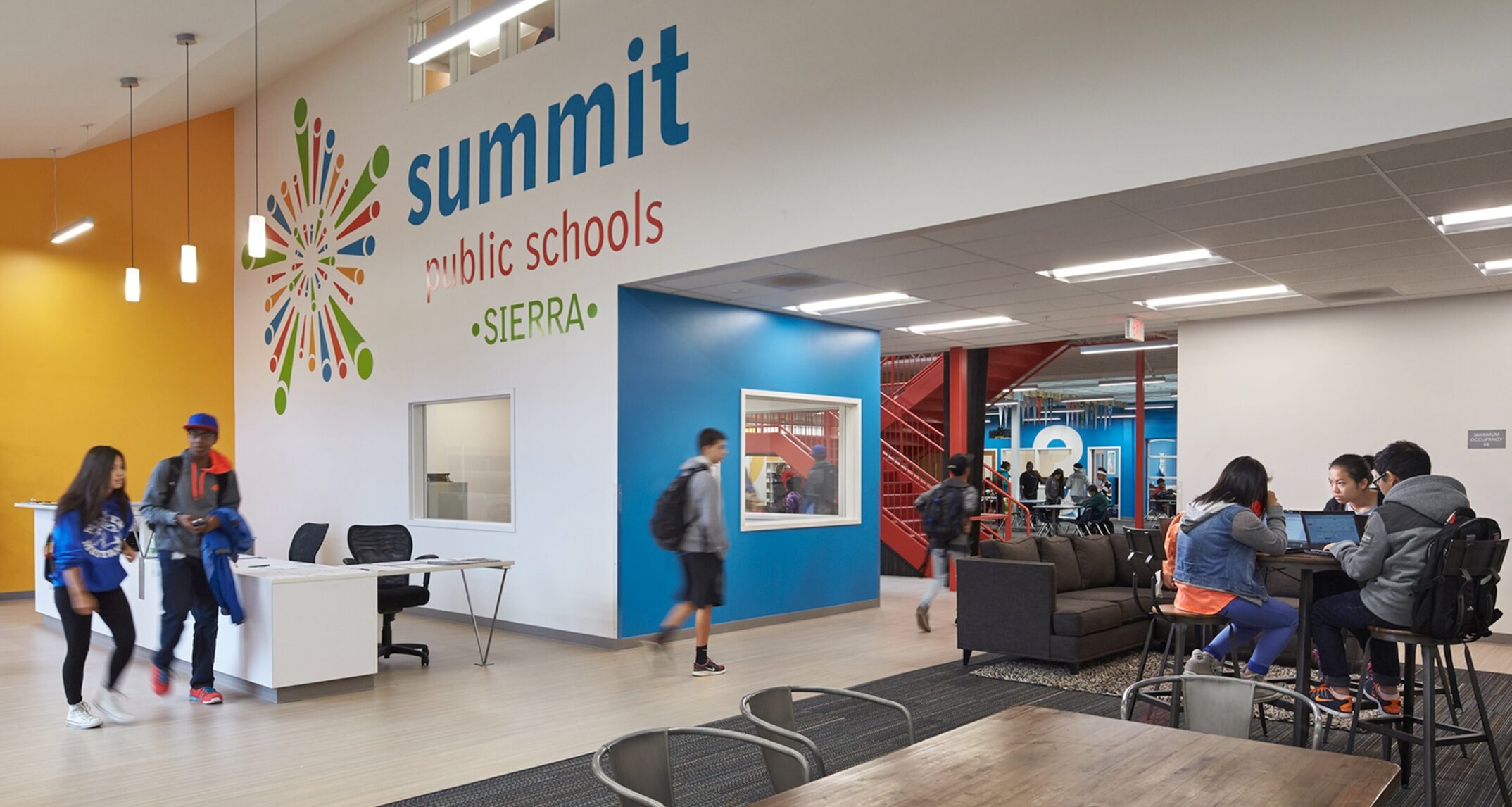
Summit Sierra Charter Public High School, Seattle, WA - NAC Architecture
Summit Sierra Public Charter High School in Seattle, recently named one of the top five most innovative schools in the world by the University Herald is one such school. Using flexible spaces, cross-curricular instruction, embracing a growth mindset and with high student expectations, the school is not at all back to basics.
Planning and design of education spaces will need to evolve and even outpace these trends so that students, teachers and learning are not just supported, but enabled by the spaces we create.
We'd love to hear your thoughts. Send us an email: NACLab@nacarchitecture.com.
